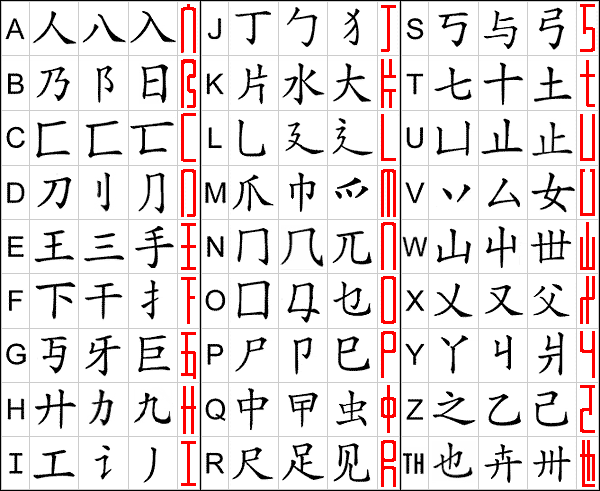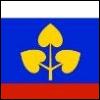2. Grammar
The alphabet comprises 26 letters, y fulfilling a double rфle as consonant and vowel. The vowels are a [pr. as in father], e [fкte], i [machine], o [most], u [rule], y [F u, or D ь]. The 21 consonants are b, c, d, f, g, h, j, k, l, m, n, p, r, s, t, v, w, x, y, z. Several consonants have two pronunciations [c hard as "k" before a, o, u, or any consonant; soft as "ts" before e, i, y; g hard as in gold before a, o, u, or any consonant, soft as in general before e, i, y; t as "ts" before ie, ia, io].
The stress falls on the vowel before the last consonant. The plural endings [-(e)s] and the adverbial endings [-bil, -ic, -im, - ul, -um] remain unstressed. Further exceptions not falling under any of these rules are marked with the accent [ґ, or `]. The length of the vowels varies. Unstressed syllables have the short vowel [a in fan, e in bend, i in fit, o in drop, u in full]. Stressed vowels followed by two consonants are short. The rest are long except in some short words, mainly prepositions.
Occidental has four diphthongs, au, ay, ey, oy, as well as eu in D ц.
The definite article is li for all genders and numbers. The indefinite article is un; lu may be used for as an article if an adjective is used alone as an abstract conception.
The singular noun has no specific grammatical ending. The plural is formed by adding -s to the words ending in vowels, or in -c, -g, -um; -es to words ending in other consonants. An exception, however, is -e, -o, -a, respectively used to distinguish neuter, masculine, and feminine [camarad/e, /o, /a].
The pronouns are yo, tu, Vu, il, illa, it; noi, vu, ili. the reflexive pronoun is se.
The possessive pronouns are mi, tu(i), su; nor, vor, lor.
The verb in the infinitive ends in -r [ama/r]. The present indicative is obtained by removing the infinitive ending [yo ama, tu ama, il ama].
The imperative form is the same as the present indicative, followed by a mark of exclamation [!]. The composite imperative is formed with ples plus the infinitive [audi! ples audir].
The past tense is obtained by adding -t to the present tense [yo ama/t].
The future tense is formed by employing the auxiliary va where English used either "shall" or "will" [yo va ear = I shall go].
The conditional is formed by employing the auxiliary vell where English used either "should" or "would" [illa vell ear si yo vell consentir = she would go if I should consent].
The optative is distinguished from the imperative by using mey with the infinitive [que il mey trovar it = that he may find it]. The hortative is formed with the word lass and the infinitive [lass nos ear in li citй].
Two auxiliary verbs are used, ha/r (an abbreviation of have/r), and esse/r, for the latter the abbreviated form es as an auxiliary and for the present tense.
The perfect and pluperfect are formed by the auxiliary verbs preceding the past participle [yo ha amat = I have loved].
The passive voice is formed with the verb esse/r [yo es vocat, yo es videt = I am seen; yo esset videt = I was seen].
The conjugation of esse/r = to be is:
| present tense | past tense | future tense |
| yo es (esse) | yo esset | yo va esser |
| tu (Vu) es (esse) | tu (Vu) esset | tu (Vu) va esser |
| il es (esse) | il esset | il va esser |
| illa (or ella) es (esse) | illa (or ella) esset | illa (or ella) va esser |
| it es (esse) | it esset | it va esser |
| noi es (esse) | noi esset | noi va esser |
| vu es (esse) | vu esset | vu va esser |
| ili es (esse) | ili esset | ili va esser |
The
present participle is
essent; the
past and passive participle is
esset.
The adjectives are invariable in number and gender [litt, bon, micri].
The adverbs have no one grammatical ending. Some adjectives may be used as adverbs without alteration [tу esset bon fat = that was well done]. The adverbial endings -men, -li, -ъ may be used, but a number of adverbs have no particular grammatical ending.
The cardinal numbers are: un, du, tri, quar, quin, six, sett, ott, nin, deci, deci-ъn or ъundeci, deci-dъ or dъdeci; duant = 20, triant, quarant; cent, ducent, sixcent, etc.
The ordinal numbers are formed by the use of the suffix -esim [unesim, duesim, etc.].
The degrees of comparison are bon, plu bon, max bon; bell, minu bell, minim bell.
In word derivation Occidental accepts both the principle of direct and indirect derivation. Direct derivation is limited to certain cases which are indicated in the complete list of affixes below. For direct derivation we must apply the three rules of the Wahl. To form nouns from verbal roots we detach the infinitive -r or -e/r [vid, vid-e/r] to obtain the perfect stem.
- Rule 1: If, after removing the grammatical ending [-r, -e/r] the stem ends in a vowel, add -t or change -y into -t [crea/r, crea/t, crea/t/or; atiny-e/r, atin/t, atin/t/ion].
- Rule 2: If the final consonant of the stem should be either d or r, the letters are changed into -s [decide/r, deci/s, deci/s/ion].
- Rule 3: In all other cases, except those especially cited below, the removal of the infinitive -r (or -er gives the required perfect stem [duct/e/r, duct-, duct/ion]. The six exceptions are cede/r, perfect stem cess-; sede/r, sess-; move/r, mot-; tene/r, tent-; verte/r, vers-; veni/r, vent-.
To form verbs from nouns and adjectives, we remove the endings and obtain the perfect stem. By adding -r or -er we will obtain, in most cases, the verb [decora/t/ion, decora/t, decora/r].
Syntax: The ordinary word order is subject-verb-object. [li monument es plazzat avan li palazzo = the monument is (placed) in front of the palace]. Short adjectives generally precede the noun [un bon idй = a good idea]; long adjectives may follow the noun [li lingue international = the international language]. The interrogative phrase begins with esque [esque vu va promenar? = are you going to walk?] or any other interrogative pronoun or adverb [qui, quo, quande]. Inversion may be used without the interrogative esque [have vu li libre? = have you the book?]. The negation is indicated by the word ne [il ne ha fat it = he has not done it].












